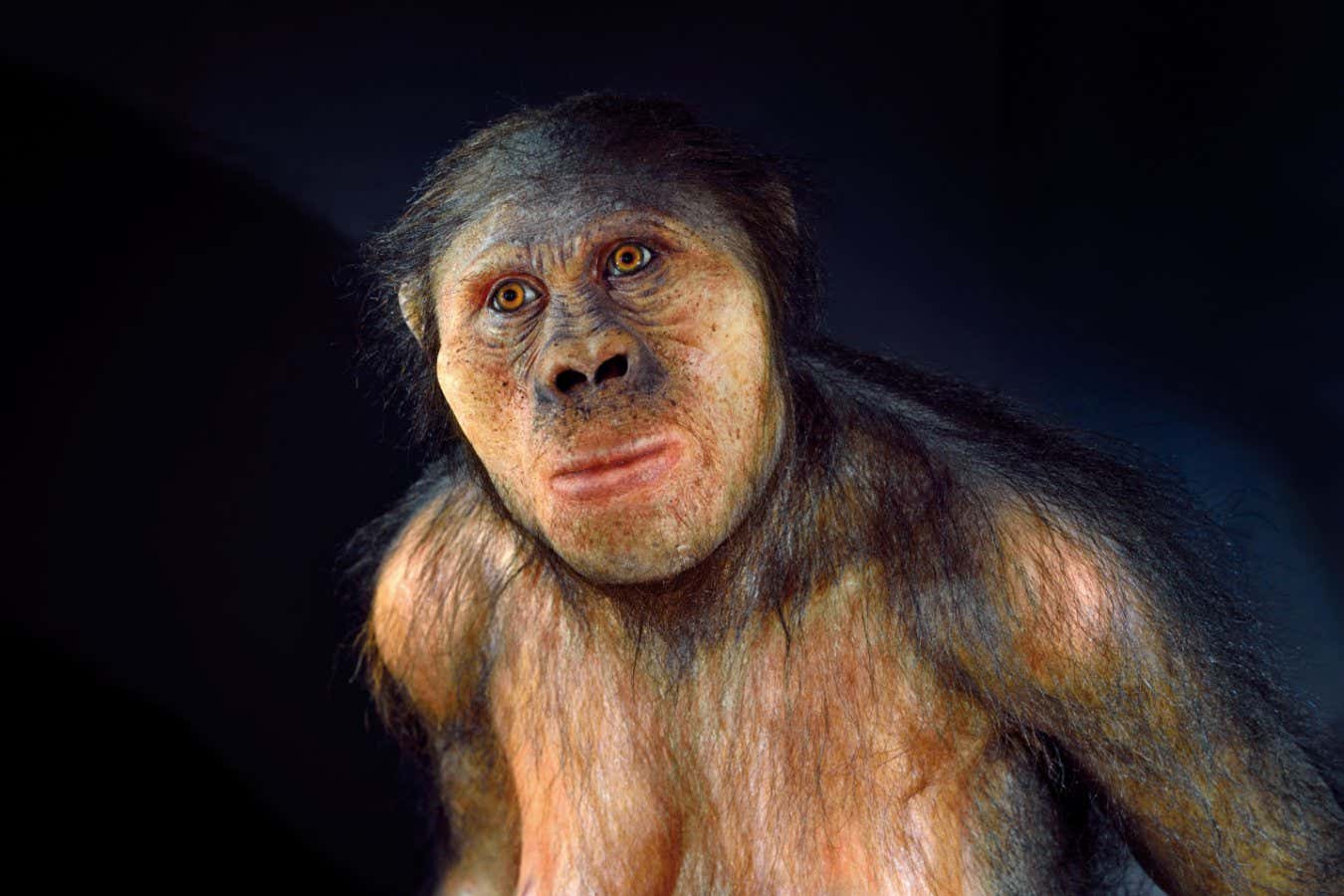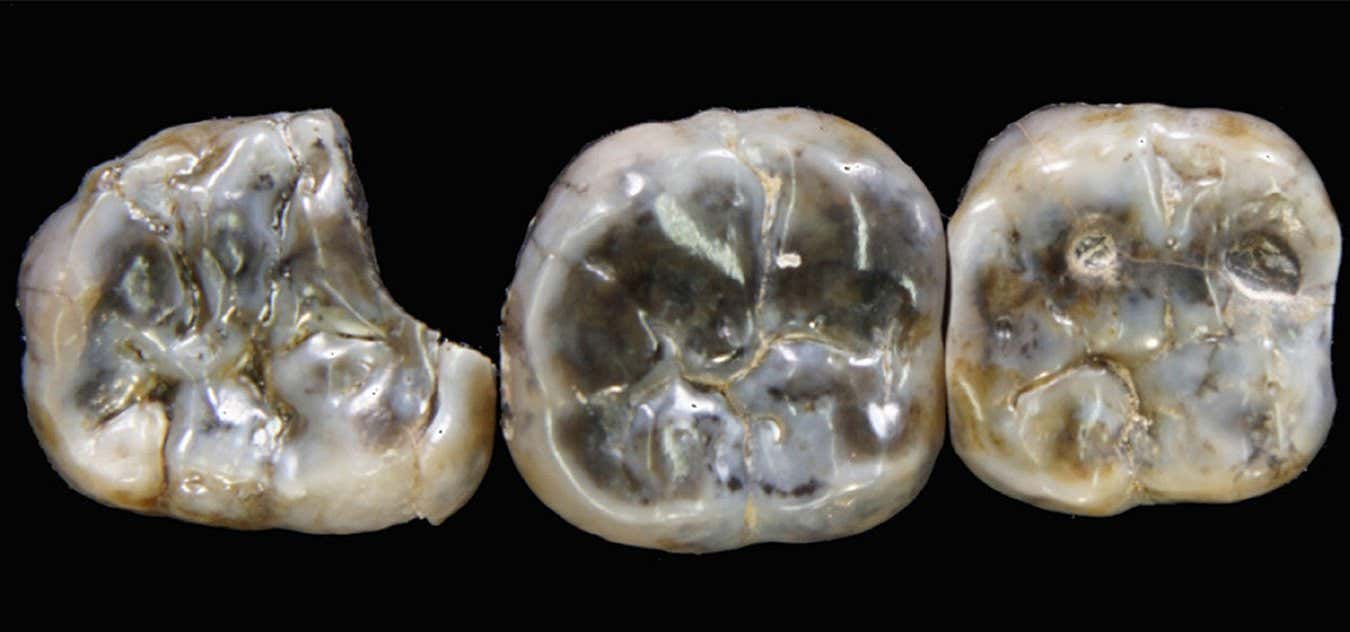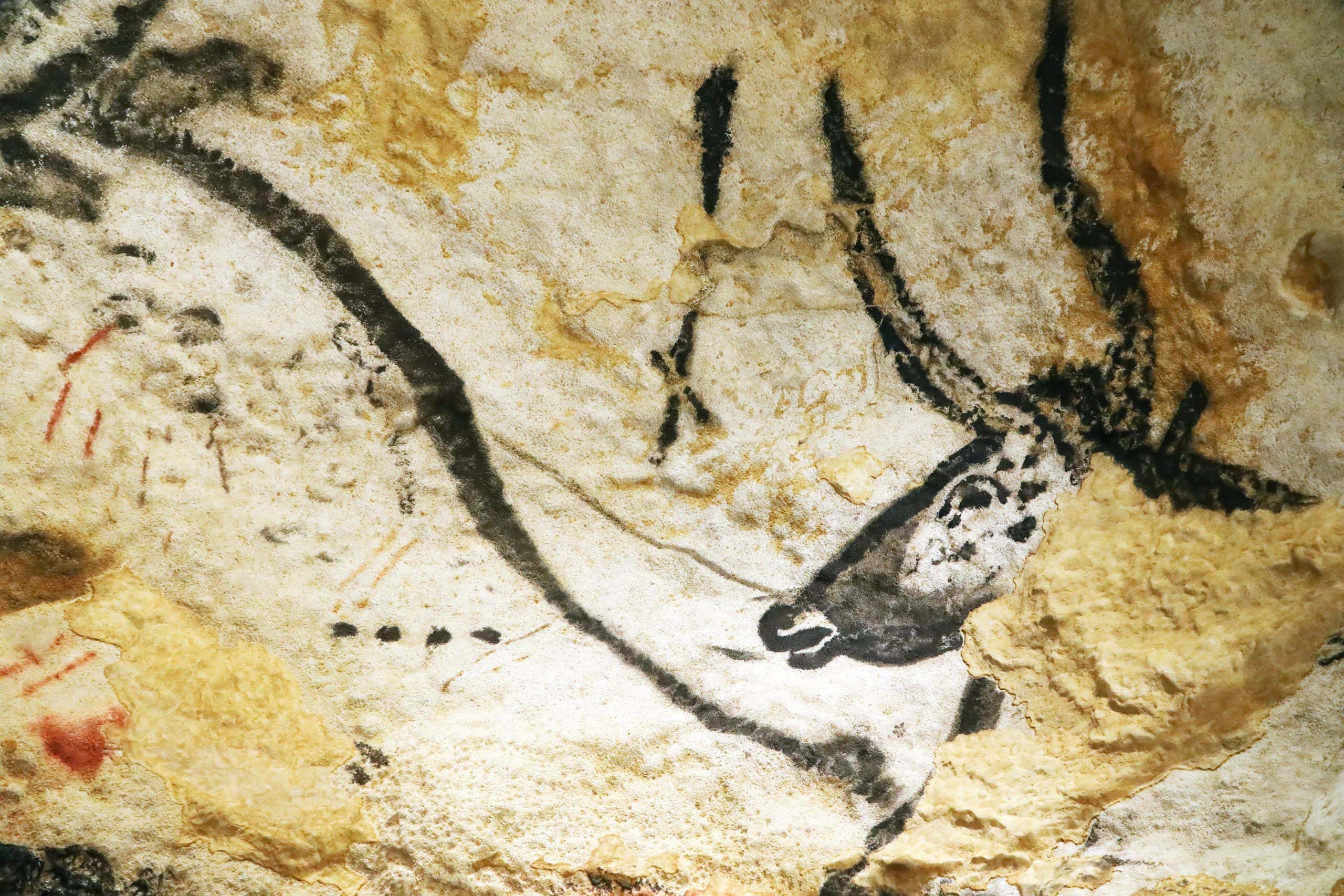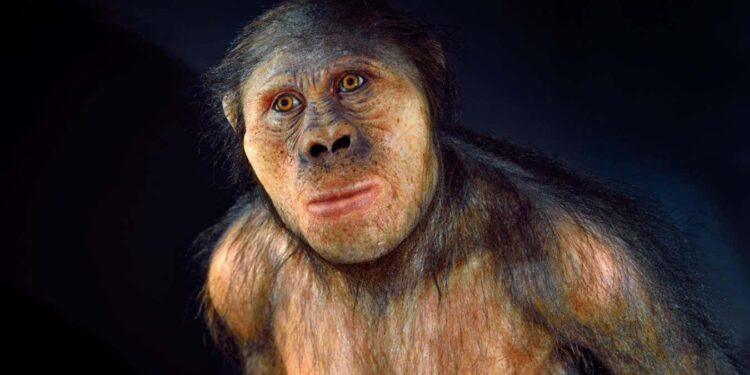
A model of an Australopithecus hominin
Credit: Cro Magnon/Alamy
Thirteen hominin teeth have been discovered in Ethiopia in layers of volcanic ash between 2.6 and 2.8 million years old. The researchers think some of the teeth belong to one of the earliest members of the Homo genus, while others appear to be from a new hominin, suggesting both species lived alongside each other.
“They either shared resources, and everything was hunky-dory, or maybe one of them was marginalised,” says Kaye Reed at Arizona State University. “We just don’t know at this point.”
Previous discoveries show that before around 3 million years ago, several species of early hominins in the genus Australopithecus lived in this region, including Australopithecus afarensis, the species to which the famous Lucy fossil belonged.
From around 2.5 million years ago, the first hominins from the genus Homo start appearing, with features more similar to those of modern humans. So what happened in between? To find out, Reed and her colleagues have been digging in an area called Ledi-Geraru, where there are volcanic deposits from this crucial time.
In 2013, her team found a 2.8-million-year-old jaw that appears to be from a Homo species, pushing back the origin of this genus. Now her team has found 13 teeth in three different layers of ash.
The teeth in the oldest and the youngest layers – which are dated to 2.79 and 2.59 million years ago – also belong to the genus Homo, according to the team. But they think the teeth in the middle layer – which is dated to 2.63 million years – are from an Australopithecus. The sites are all within a kilometre of each other.
“We were expecting to find more of our genus Homo, and then we found Australopithecus as well,” says Reed.

Molar teeth from Ledi-Geraru, which may come from an unknown species of Australopithecus
Brian Villmoare: University of Nevada Las Vegas
What’s more, the Australopithecus teeth are different enough from those of A. afarensis and other australopithecines that the team thinks it is probably a new species. If they are right, it means the evolutionary tree leading to modern humans is bushier and more complex than we thought.
It is a great discovery, says John Hawks at the University of Wisconsin–Madison, but it is hard to draw conclusions based on a few teeth.
“When you find evidence that spans 200,000 years, as these teeth do, you can’t be sure that they lived at the same time,” says Hawks. “That’s a huge amount of time.”
The identification of the teeth as separate species is also questionable. “Many fossils that we find combine features that are sometimes found in different species. You can always take a small sample and break it up into the most Homo-like and most Australopithecus-like,” says Hawks.
“The question is what, statistically, you can say, and in this case the statistics on size measurements don’t show that the teeth are very different from each other. They’re in the range of overlap of early Australopithecus species and early Homo species.”

Neanderthals, ancient humans and cave art: France
Embark on a captivating journey through time as you explore key Neanderthal and Upper Palaeolithic sites of southern France, from Bordeaux to Montpellier, with New Scientist’s Kate Douglas.
Topics:
Source link : https://www.newscientist.com/article/2492288-fossil-teeth-may-come-from-a-new-species-of-early-hominin/?utm_campaign=RSS%7CNSNS&utm_source=NSNS&utm_medium=RSS&utm_content=home
Author :
Publish date : 2025-08-13 16:00:00
Copyright for syndicated content belongs to the linked Source.









